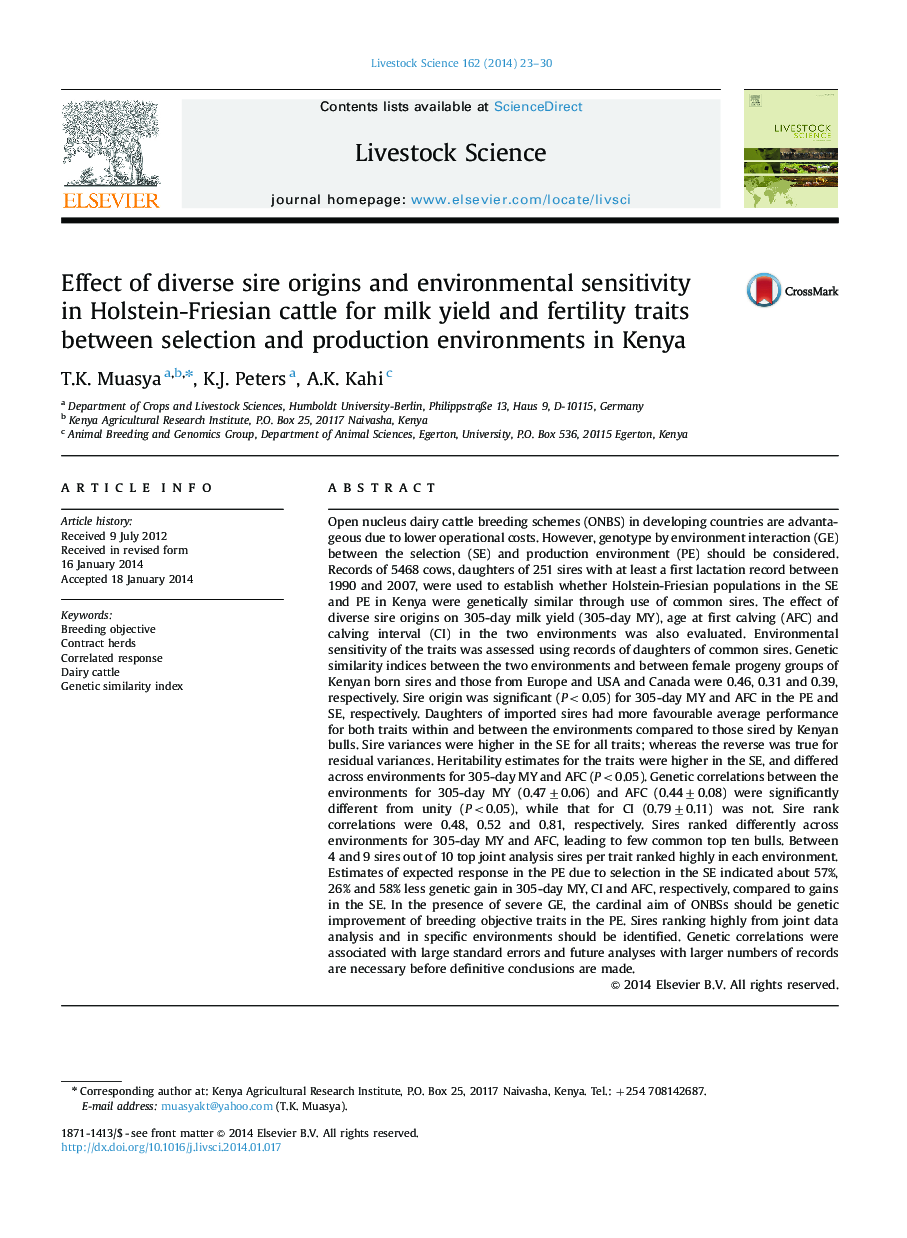| Article ID | Journal | Published Year | Pages | File Type |
|---|---|---|---|---|
| 5790181 | Livestock Science | 2014 | 8 Pages |
Abstract
Open nucleus dairy cattle breeding schemes (ONBS) in developing countries are advantageous due to lower operational costs. However, genotype by environment interaction (GE) between the selection (SE) and production environment (PE) should be considered. Records of 5468 cows, daughters of 251 sires with at least a first lactation record between 1990 and 2007, were used to establish whether Holstein-Friesian populations in the SE and PE in Kenya were genetically similar through use of common sires. The effect of diverse sire origins on 305-day milk yield (305-day MY), age at first calving (AFC) and calving interval (CI) in the two environments was also evaluated. Environmental sensitivity of the traits was assessed using records of daughters of common sires. Genetic similarity indices between the two environments and between female progeny groups of Kenyan born sires and those from Europe and USA and Canada were 0.46, 0.31 and 0.39, respectively. Sire origin was significant (P<0.05) for 305-day MY and AFC in the PE and SE, respectively. Daughters of imported sires had more favourable average performance for both traits within and between the environments compared to those sired by Kenyan bulls. Sire variances were higher in the SE for all traits; whereas the reverse was true for residual variances. Heritability estimates for the traits were higher in the SE, and differed across environments for 305-day MY and AFC (P<0.05). Genetic correlations between the environments for 305-day MY (0.47±0.06) and AFC (0.44±0.08) were significantly different from unity (P<0.05), while that for CI (0.79±0.11) was not. Sire rank correlations were 0.48, 0.52 and 0.81, respectively. Sires ranked differently across environments for 305-day MY and AFC, leading to few common top ten bulls. Between 4 and 9 sires out of 10 top joint analysis sires per trait ranked highly in each environment. Estimates of expected response in the PE due to selection in the SE indicated about 57%, 26% and 58% less genetic gain in 305-day MY, CI and AFC, respectively, compared to gains in the SE. In the presence of severe GE, the cardinal aim of ONBSs should be genetic improvement of breeding objective traits in the PE. Sires ranking highly from joint data analysis and in specific environments should be identified. Genetic correlations were associated with large standard errors and future analyses with larger numbers of records are necessary before definitive conclusions are made.
Related Topics
Life Sciences
Agricultural and Biological Sciences
Animal Science and Zoology
Authors
T.K. Muasya, K.J. Peters, A.K. Kahi,
